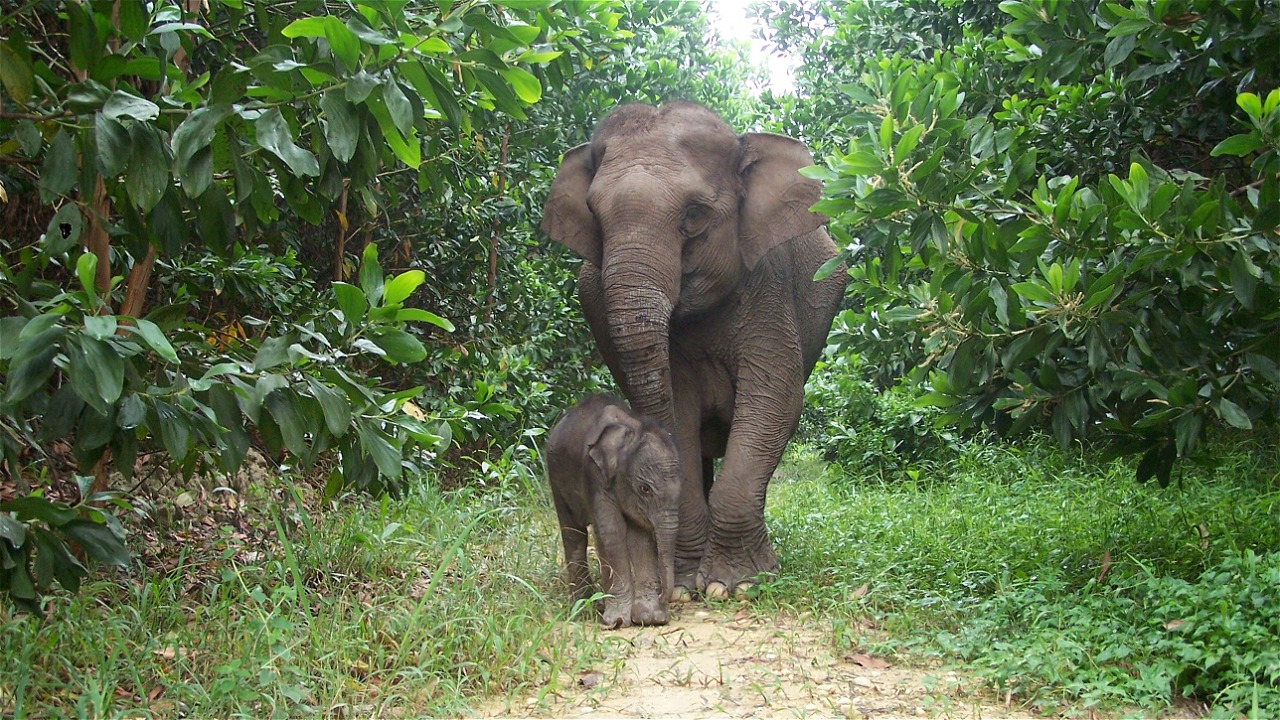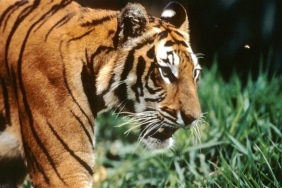DNA STUDY SHOWS SUMATRAN ELEPHANT'S HIGH VULNERABILITY TO EXTINCTION
Jakarta (11/08) - Celebrating World Elephant Day 2016, WWF Indonesia and the Eijkman Institute of Molecular Biology, a research institute under the Ministry of Research and Technology, presented the results of the study of deoxyribonucleic acid (DNA) of Sumatran elephants (Elephas maximus sumatranus) taken from elephant dung samples in several pockets of elephant habitat in Sumatra, especially Tesso Nilo.
DNA studies can be used for a variety of purposes, including counting populations and knowing the kinship of one individual or population group to another. High levels of inbreeding can lead to an animal's susceptibility to disease, associated with low genetic variation. In addition to population and kinship studies, this genetic technique can also be used for the purposes of mitigating elephant and human conflicts, as well as forensics in law enforcement of wildlife crimes.
"Since 2012, using a systematically designed method, we have been collecting DNA samples from elephant feces in Tesso Nilo National Park and surrounding areas. From the analysis of these samples, we managed to identify 113 different individuals, and can estimate the minimum population size of Sumatran elephants in the Tesso Nilo habitat enclave at the time the samples were taken to be around 154 individuals," said Sunarto, WWF-Indonesia Satwaliar Ecologist. "In addition to knowing the population size, this study also revealed the movement of several individuals between several locations that had not been known before" continued Sunarto.
The DNA study, which was strengthened by the study of elephant movement with the help of GPS collars, also succeeded in revealing the movement of the Tesso Nilo elephant group which was focused outside the National Park, namely in the Industrial Plantation Forest area. This is thought to be caused by the high level of human activity, especially encroachment, that occurs within the Tesso Nilo National Park.
"The decline in the population of Sumatran elephants is mainly due to deforestation and conversion of forests into plantations, timber estates and settlements, which causes elephants to lose their natural habitat," said Krismanko Padang, Chairman of the Indonesian Elephant Conservation Forum. This also increases the frequency of conflict between elephants and humans. "The condition is further exacerbated by poaching that targets elephant ivory due to black market demand, both domestic and international, which is still large," added Krismanko.
Prof. Dr. Herawati Sudoyo, Deputy Head for Fundamental Research at the Eijkman Institute of Molecular Biology, said in her presentation, "We obtain various population information, such as population size, individual genetic profiles, genetic diversity, sex ratio, and distribution. Genetic data can very accurately be used to recognize each individual, so that it can help handling cases of animal crimes, such as the case of the elephant killing of Yongki elephant in Lampung some time ago."
One Sumatran elephant murder case that remains unsolved is the death of Yongki, an elephant trained as a member of the Bukit Barisan Selatan National Park's Flying Squad to ward off wild elephants in the area. "The Eijkman Institute now has an individual DNA specimen of Yongki, so that if we find evidence of elephant ivory, we can match whether the ivory belongs to Yongki. This information can then be used to track down and take action against the owners, ivory traders and perpetrators who killed Yongki," Hera explained.
The use of molecular genetic techniques for animal conservation in Indonesia has only been limited to Sumatran elephants in the Tesso Nilo, Bukit Tigapuluh, Way Kambas and Bukit Barisan Selatan landscapes. Some organizations other than WWF that are active in applying this technique, and in collaboration with the Eijkman Institute are FZS and WCS. The combination of this technique with non-invasive sampling can be advantageous in the study of elusive and endangered animal populations. Besides not needing to come into direct contact with the animals so that potential animal-human casualties are avoided, it also does not cause stress to the animals.
Drh. Dedi Chandra from Way Kambas Elephant Conservation Center, said, "Most Sumatran Elephants are currently outside protected areas, such as in plantations and even settlements, so they are very vulnerable to conflict." "We try to maximize the contribution of ex-situ conservation institutions to support elephant conservation in their habitat, or in-situ, and strive to improve elephant care and management techniques at PKG."
"We cannot continue to accommodate elephants from the wild. In addition to further threatening the condition of elephants in the wild, the maintenance costs are also enormous," continued Dedi.
Sunarto emphasized the need for elephant protection strategies outside protected areas. "Conventional elephant roaming paths currently intersect or are even completely in the area of plantation forests, plantations and even villages or cities. Elephants are forced to eat young palm tubers and acacia bark. Therefore, the role of plantations and the government is very important to protect the Sumatran elephant population, which is estimated to be 1700 throughout Sumatra."
Plantation companies have a social and environmental responsibility to conserve elephants that already inhabit the concession land where the company operates. WWF together with several companies have developed several techniques related to better plantation and forest plantation management (Better Management Ppractices) to support the protection and preservation of endangered animals such as elephants.
Elephant protection initiatives also come from the public. Musician Tulus, for example, in recent months has taken the initiative to raise public awareness to protect Sumatran elephants through an action with the hashtag #janganbunuhgajah. On this occasion, Tulus handed over the results of the donation collection made over the past five months.
"Yongki elephant is one that I know well and helped me play a role in one of the music videos of my song. The case of his death moved my heart to take action. Right now, the Elephant's existence needs help from humans. Any party can contribute according to their capacity. Through what I have, I am trying to raise funds and also raise public awareness about the current existence of Sumatran Elephants. My biggest hope is also that research on elephants can continue to be improved, and the government can play a greater role by enforcing the law against animal criminals." said TULUS.
---o0o---
For more information, please contact:
Diah R Sulistiowati, Forest & Terrestrial Species Campaign Coordinator, WWF-Indonesia
Tel: +62 8111004397, Email: dsulistiowati@wwf.id
Turyadi, Public Relations of Eijkman Institute of Molecular Biology
Tel: +62 82124952949, Email: yadi@eijkman.go.id





